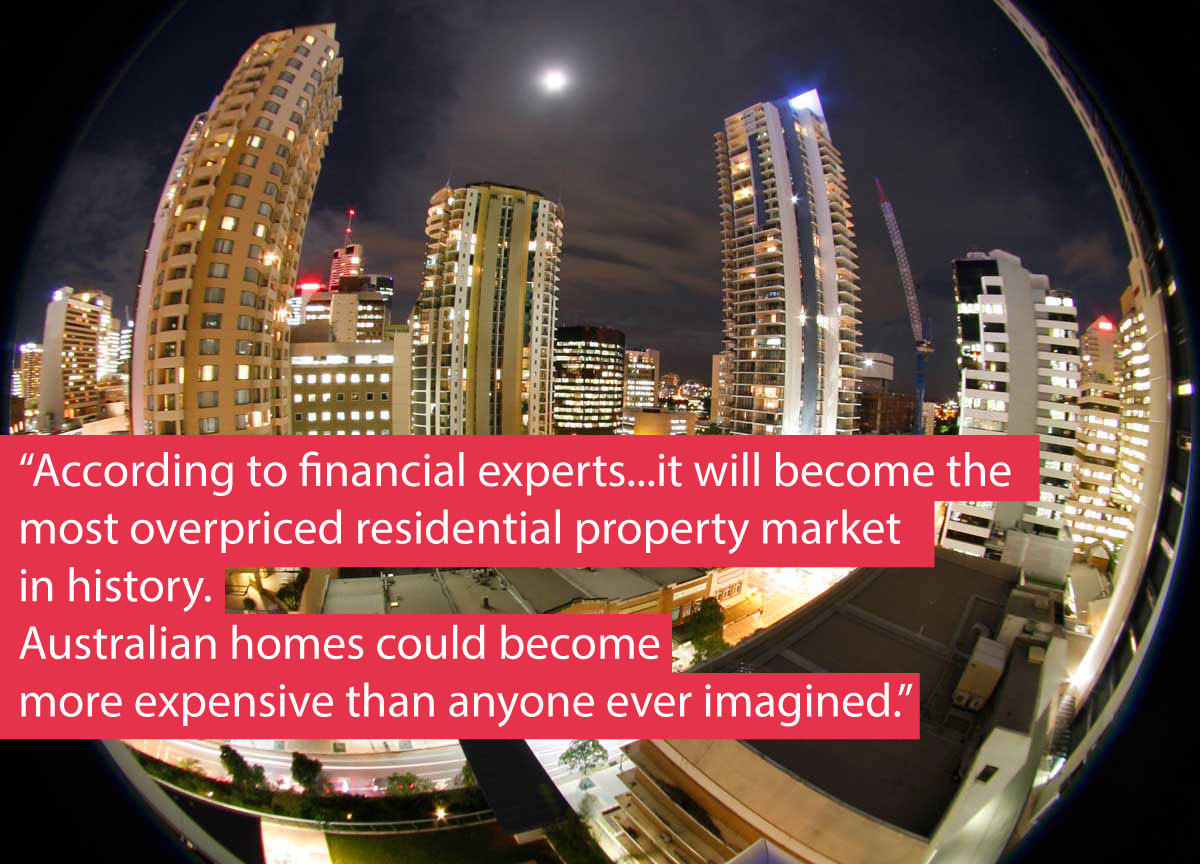The Australian housing market is valued at $5.1 trillion as of March 2014 with an annual growth rate of 10.9%. According to financial experts this is overvalued by almost 10%, and the time is near when it will become the most-over priced residential property market in history. When that time comes, Australian homes could become more expensive than anyone ever imagined.
Also, homes in big cities such as Melbourne and Sydney, where 55% of the urban population are concentrated, are valued at 10 times higher than the average income with a growth rate of 10.9% and 15.7% respectively for the March quarter 2013 to March quarter 2014. Meanwhile, disposable income has only increased by 1. 8% in that period.
Is there a housing bubble?
Some speculate that there may be an Australian housing bubble. This theory has been bandied about as far back as 2001, but since then house prices continued to rise higher and higher to their present level. This unprecedented surge in property prices has been attributed to low interest rates that triggered a growth in credit funneled mostly to housing, and to the extraordinary increase in the number of property investors to the detriment of first-time home owners.

However, the government, the FIRE sector (finance, insurance and real estate), bankers and a number of analysts, academics and economists are of the opinion that Australia’s housing prices are soundly grounded on intrinsic values or upon fundamental valuations.
A housing bubble is nothing new. It has happened in the US, Canada and other developed countries, and is a regular periodic occurrence in global or local property markets. It is typified by a precipitate increase in the value of housing properties until they reach a peak point, which drop once those prices can no longer be sustained by the level of income. Unfortunately, a bubble is only acknowledged once it has burst.
Is the bubble ready to burst?
According to the “profits of doom,” the Australian housing market, which is dominated by investors, is not conducive to sustainable growth. Property investors are capricious: when their expectations are not met, the market can turn rapidly. And, for all intents and purposes, Australian housing has not exactly been a lucrative investment, offering no more than a short-term speculative gain in the last few years.
This self-fulfilling prophecy seems to have been validated by hints or indications that home prices are finally flattening, and in some areas, even dropping. In recent news it has been reported that Australia’s house price index dropped to 1.2% during the first quarter of 2014, and 1.9% in the month of May. Prices dropped in six of the eight capital cities, and Melbourne recorded the biggest decline of 3.6%. In the week ended June 5 this year, the housing price index again showed a drop of 0.17%, the fourth successive week of declines.
This condition however, is seen by analysts as proof that there never was a housing bubble. As they see it, the housing market was merely responding to the cuts in interest rates and now the market is slowly correcting itself.

